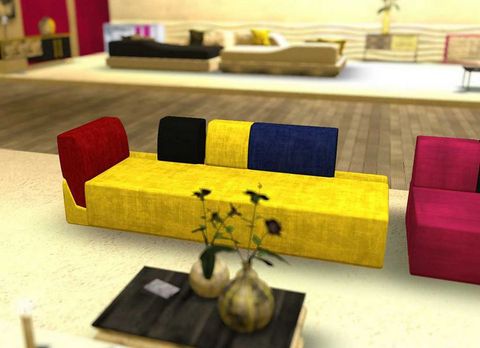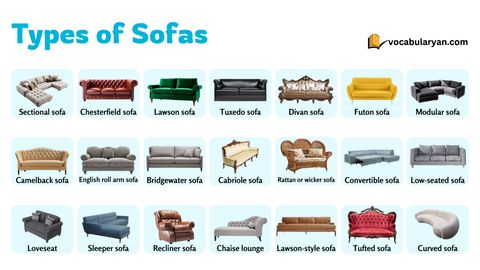In a world obsessed with newness, there’s something deeply satisfying about furniture that tells a story. These aren’t just pieces that sit on your floor—they’re artifacts of lives lived, spaces transformed, and creative visions reborn.
Picture this: a worn leather sofa sitting proudly in a modern apartment, its scars telling tales of decades past. This isn’t just furniture—it’s a conversation starter, a statement about values, and a testament to design evolution. Second-life sofas have quietly taken center stage in today’s interior design landscape, creating a bridge between nostalgia and innovation. What started as a practical solution during economic hardship has blossomed into a design movement that speaks to our collective desire for sustainability and character. These pieces carry weight—not just physically, but emotionally and aesthetically. They’re the unsung heroes of contemporary interiors, offering personality and proven durability in ways that brand-new pieces simply cannot match.
Historical Roots of Second-Life Design
The concept of reusing furniture isn’t new. Throughout history, people have made do with what they had, often transforming pieces that others discarded. In the 1940s and 50s, post-war economies meant that families were resourceful, turning salvaged materials into functional beauty. Think of the iconic mid-century modern pieces that emerged from thrift stores and estate sales. These weren’t just practical choices—they were expressions of creativity under constraint. During the Great Depression, people didn’t throw away their furniture. They repaired it, repurposed it, and passed it down. This tradition laid the groundwork for what we now call second-life design. The quality was often exceptional—craftsmanship that modern mass production sometimes lacks. Today’s designers recognize this heritage and build upon it, honoring the original intent while adapting to contemporary needs.
The Rise of Sustainable Design Movement
The environmental crisis has forced us to reconsider everything we consume. Second-life sofas embody this shift toward conscious consumption. Modern consumers increasingly seek products that align with their values, and furniture is no exception. According to recent studies, over 60% of millennials consider sustainability when making major purchases. This isn’t just about guilt—there’s genuine satisfaction in knowing your purchase has a positive impact. The second-life movement taps into this desire, offering pieces that have already served their first purpose. A vintage sofa from the 1970s might have been a family heirloom, then a rental property staple, now finding new life in a contemporary space. Each piece carries with it a narrative of reuse, reducing waste and extending the lifecycle of materials. It’s a powerful statement that doesn’t require words.
Design Elements That Define Modern Second-Life Pieces
What makes a second-life sofa truly special? It’s not just about age—it’s about the unique characteristics that emerge through time and use. The patina on leather, the softness of well-worn fabric, the slight imperfections that tell stories. These elements add depth and authenticity that factory-made pieces struggle to replicate. Consider the difference between a pristine new sofa and one that’s developed a gentle fade. The latter has character, having been shaped by daily interactions. The wood grain in a reclaimed frame might show weathering that creates beautiful contrasts. Designers today actively seek these qualities, often working with craftsmen who specialize in restoration and adaptation. They might preserve the original structure while updating the upholstery, or they might completely transform the piece to fit modern aesthetics. The key is respecting the original while embracing change.
Popular Styles and Their Modern Interpretations
Vintage styles have found new relevance in contemporary design. The classic mid-century modern silhouette, for instance, has become incredibly popular among second-life enthusiasts. These pieces often feature clean lines, organic shapes, and high-quality materials that were standard in their era. But they’ve been adapted for today’s lifestyles. A 1960s Eames chair might be reupholstered in modern fabrics while maintaining its iconic form. Similarly, Victorian-era pieces with ornate details have been simplified for contemporary spaces. The beauty lies in how these historical elements are reinterpreted rather than copied. Designers often blend traditional craftsmanship with modern comfort features. A second-life Chesterfield sofa might retain its classic buttoning but receive updated padding for better support. These transformations show how the past can inform the present without feeling dated.
Practical Benefits Beyond Aesthetics
There’s more to second-life sofas than looks. They offer substantial value in terms of cost-effectiveness and durability. A quality vintage sofa can cost half what a new one would, while lasting twice as long. Many second-life pieces are built to withstand decades of use, often using materials and construction methods that modern mass production has largely abandoned. The joints are typically stronger, the frames more solid, and the overall build quality superior. Additionally, these pieces often come with unique features that are rare in new furniture. An old armchair might have hidden storage compartments, or a dining room set might include unusual proportions that add visual interest. They’re also more likely to be custom-sized, fitting spaces perfectly rather than forcing spaces to fit standard dimensions. The practical advantages are undeniable.
Finding and Caring for Second-Life Sofas
Where do you start looking for these treasures? Estate sales, antique shops, online marketplaces, and local salvage yards are all potential goldmines. But not every piece is worth the investment. Look for structural integrity first—the frame should be solid, and the springs shouldn’t be broken. Check for signs of water damage or pest issues, which can be expensive to repair. Once you find the right piece, proper care extends its life significantly. Regular cleaning with appropriate products keeps leather supple, while fabric pieces benefit from periodic professional cleaning. Some second-life pieces require specific maintenance techniques—certain woods need particular oils, and some fabrics require careful handling. The investment in learning these skills pays off in longevity. Many collectors develop relationships with local craftspeople who specialize in restoration work. These partnerships ensure that pieces maintain their value and character over time.
Second-life sofas represent more than just furniture—they’re symbols of a changing relationship with consumption and creation. They remind us that beauty isn’t always new, and that the most meaningful pieces often carry the weight of experience. As we navigate an increasingly uncertain future, these pieces offer stability and continuity. They challenge us to think differently about what we own and how we interact with the objects around us. Whether you’re drawn to the romance of vintage craftsmanship or the practical benefits of sustainable living, second-life sofas provide a bridge between past and future. They prove that good design transcends trends, and that the best pieces are those that endure both time and taste. In a world of constant change, these sofas stand firm, carrying forward stories and style with quiet confidence.















